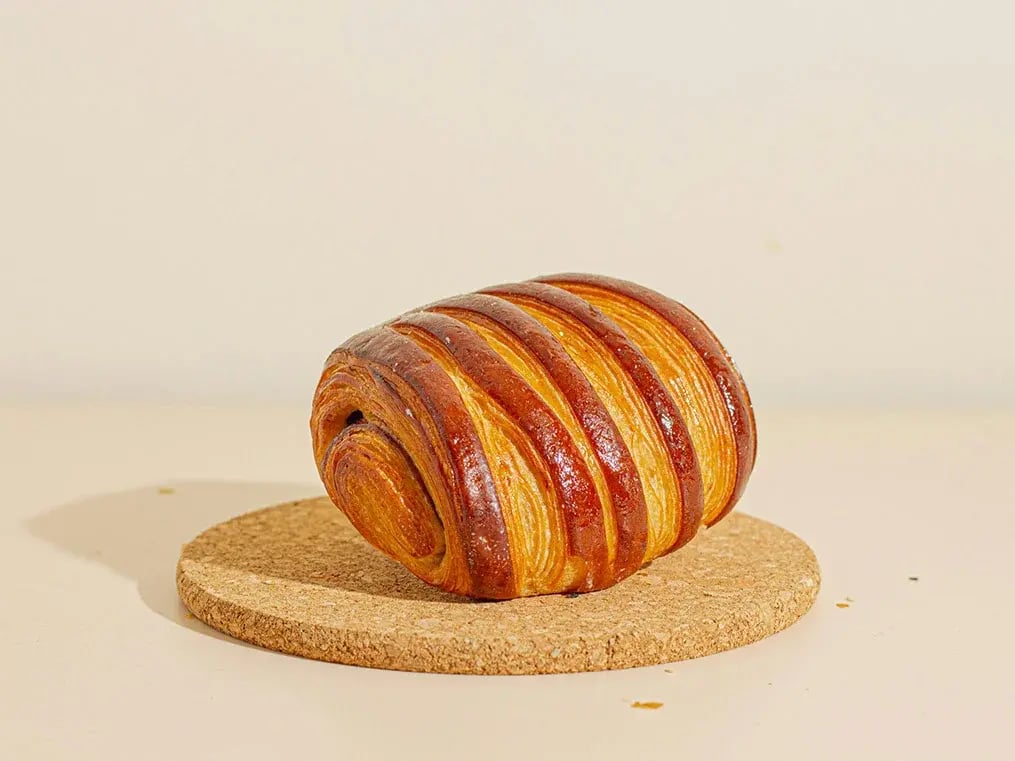- Home
- Articles
- An Introduction to French Pastries: Croissant to the chocolate dessert, Pain Au Chocolat
Add croissants and pain au chocolat to your vocabulary of french dessert names, which belong to the Viennoiseries category because of their Viennese origin.

French pastries are known for the painstaking work that's put into them to create delicate layers, buttery textures, and exquisite flavors. They are a true labor of love and commitment to the art of baking, which is why they are so popular in France and the rest of the world. They're beautiful not just to look at but also to eat, and are a very important part of the French culinary tradition. You can have them whenever you want, and forget the tea cake recipe and instead pair these with a hot cup of coffee in the morning as breakfast or as a tea time snack.
The quality of ingredients, precise techniques, and attention to detail that is given to French pastries is what sets them apart. Whether it's the croissant or the mille-feuille, each pastry in our list has its own story to tell. Let's acquaint you with some basic French pastries that you can try at your favorite bakery or when you take that dream trip to France! Let’s start with the mighty croissant and pain au chocolat, which belong to the Viennoiseries category because of their Viennese origin.
The Croissant

We all love a fresh, buttery and flaky croissant that’s come straight out of the oven. You can bite into it or break little bits of the crescent-shaped bread, and dip it in your sweetened coffee or hot chocolate too. It's believed that croissants originated in Austria, inspired by this bread called kipferl, but were actually perfected in France.
August Zang, an Austrian artillery officer, founded a Viennese bakery called Boulangerie Viennoise on 92, rue du Richelieu in Paris sometime in the 1830s. One of the items on the menu was the Viennese delicacy kipferl, which became so popular that it inspired many imitations. Eventually, the bastardisation led to the creation of the croissant. Besides being credited with bringing croissants to France, he’s also the one who introduced novel baking mechanisms, like the steam oven to the country. The steam ovens helped develop a really chewy crust, giving them a flaky exterior. Some historical accounts have also credited Marie-Antoinette for bringing the croissant to France, however, this has been debunked.

Yeast-leavened dough is used, which is layered with butter, then rolled and folded several times, just like you do with puff pastry so you get the signature, visible layers after baking. Plain, butter croissant is a fan favorite, but there are so many sweet and savory variations that are made now, all around the world. Italy also has its own version of the croissant called cornetto, which is softer on the outside.
Pain au Chocolat

Pain au Chocolat is simply the chocolate stuffed version of a croissant. It’s made using the same technique of laminating the dough, letting it proof, but usually a rectangle of rich chocolate is placed inside before baking. Pain au Chocolat is not shaped into a crescent, but rolled up and then baked to perfection. The result is a flavor bomb of butter, luxurious pastry, and melted chocolate. In some parts of France, this pastry is also sometimes referred to as chocolatine or couque au chocolat.
Zang, the baker and entrepreneur who set the inspiration of croissants in France, is also the one who can be credited with the creation of the pain au chocolat. However, his version featured a brioche dough, which was bready. French bakers chose to replace the brioche with the airy and light puff pastry. There's another origin story, which attributes the Brits. Some believe that during the Brit's reign over the Aquitaine region of France in the 15th century, they requested "chocolate in bread", which set the roots for this 19th-century invention.
Like This Article?
More Like This



Popular Articles



Trending Web Stories
Curated Recipes





















